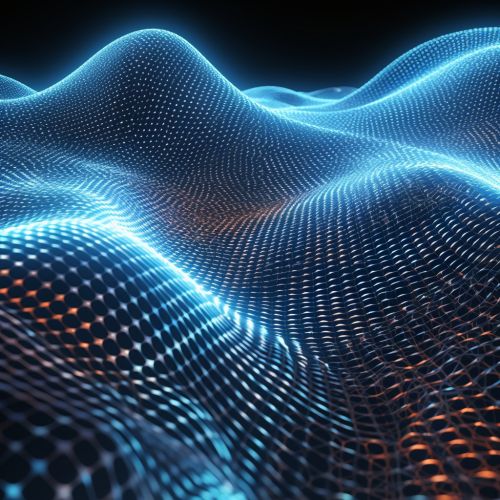Wave-particle duality
Introduction
Wave-particle duality is a fundamental concept in quantum mechanics that describes the behavior of subatomic particles such as photons and electrons. This principle asserts that these particles can exhibit both wave-like and particle-like properties, depending on the circumstances. The concept is a cornerstone of quantum mechanics, a branch of physics that deals with phenomena on a very small scale, such as atoms and subatomic particles.


Historical Background
The idea of wave-particle duality originated in the early 20th century, during a period of significant scientific discovery and innovation. The concept was first proposed by physicist Louis de Broglie in his 1924 PhD thesis. De Broglie's work built upon the earlier theories of Max Planck and Albert Einstein, who had proposed that light could be described as discrete packets of energy, or quanta, which later came to be known as photons.
Wave-like Behavior
In certain circumstances, particles such as electrons and photons can exhibit wave-like behavior. This can be observed in phenomena such as interference and diffraction. Interference occurs when two or more waves overlap and combine to form a new wave. This can result in constructive interference, where the waves combine to form a wave of greater amplitude, or destructive interference, where the waves cancel each other out.
Diffraction, on the other hand, is the bending of waves around obstacles or the spreading of waves after they pass through a gap. This behavior is characteristic of waves and is not observed in particles. When particles such as electrons are fired at a barrier with two slits, they form an interference pattern on the other side, similar to the pattern formed by light waves. This phenomenon, known as the double-slit experiment, provides evidence of the wave-like behavior of particles.
Particle-like Behavior
Despite their wave-like behavior, particles such as electrons and photons also exhibit characteristics typical of particles. For instance, they can be counted as discrete entities and have specific locations at any given time. This particle-like behavior is observed in the photoelectric effect, a phenomenon in which electrons are emitted from a material when light of a certain frequency is shone on it.
The photoelectric effect, first explained by Albert Einstein, demonstrated that light can behave as particles. When light shines on a material, it can transfer energy to the electrons in the material. If the energy transferred is greater than the binding energy of the electrons, the electrons can be ejected from the material. This phenomenon can only be explained if light is considered to be made up of particles, or photons, each carrying a discrete amount of energy.
Quantum Superposition and Uncertainty
The wave-particle duality of quantum particles is closely related to the principles of quantum superposition and uncertainty. Quantum superposition is the principle that a quantum particle can exist in multiple states at once, and only when measured does the particle collapse into one state.
The uncertainty principle, proposed by Werner Heisenberg, states that it is impossible to simultaneously know the exact position and momentum of a particle. This principle is a direct result of the wave-like nature of quantum particles. The more precisely one property is known, the less precisely the other can be known. This is not a limitation of measurement, but a fundamental property of quantum systems.
Implications and Applications
The concept of wave-particle duality has profound implications for our understanding of the physical world. It challenges the classical view of reality and has led to the development of quantum mechanics, a theory that provides a more accurate description of the behavior of particles at the atomic and subatomic level.
Wave-particle duality also has practical applications. For example, the principle is used in the design and operation of electron microscopes, which use the wave-like behavior of electrons to create images with much higher resolution than traditional light microscopes. The principle is also fundamental to the operation of quantum computers, which have the potential to perform calculations much more efficiently than classical computers.
